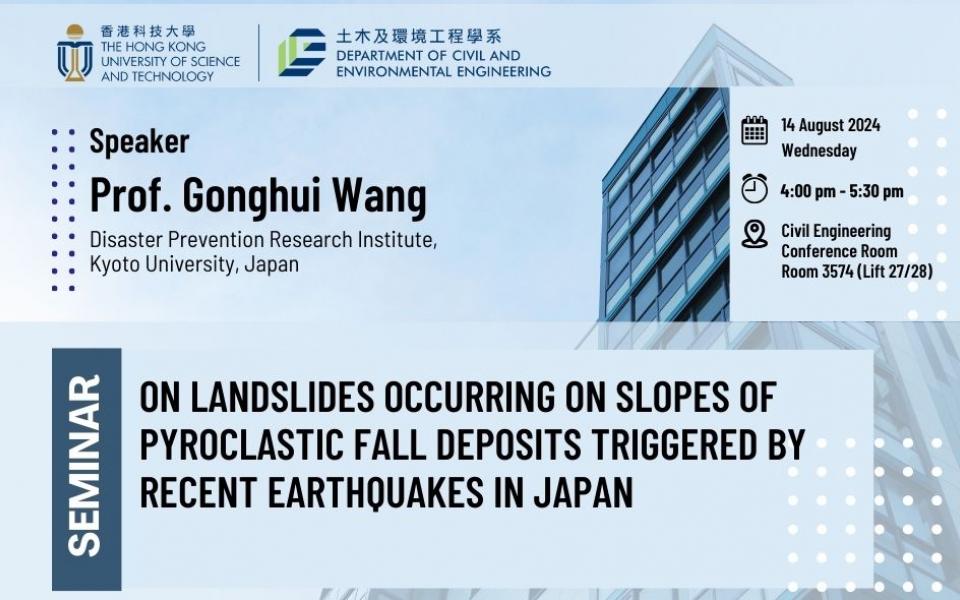Civil Engineering Departmental Seminar - On landslides occurring on slopes of pyroclastic fall deposits triggered by recent earthquakes in Japan
Supporting the below United Nations Sustainable Development Goals:支持以下聯合國可持續發展目標:支持以下联合国可持续发展目标:
On landslides occurring on slopes of pyroclastic fall deposits triggered by recent earthquakes in Japan
Landslides on slopes of pyroclastic fall deposits during earthquakes are typically highly mobile and travel long distances, posing significant threats to human safety and property. Notable examples include those triggered by the 2016 Kumamoto earthquake in Minami Aso, Kumamoto, and the 2018 Hokkaido Eastern Iburi Earthquake near the epicentres. Field studies of these events revealed that most landslides on pyroclastic fall deposits are shallow but destructive, with displaced materials mainly consisting of tephra. Their sliding surfaces generally develop within the weathered tephra layer, where high water content and the presence of halloysite, a clay mineral from volcanic glass weathering, are common. Similar phenomena have been observed in other countries. The presence of halloysite is believed to contribute significantly to slope instability and landslide movement on tephra slopes. In this study, we conducted long-term post-earthquake observations to understand the coseismic response of slopes during main shocks and examined the shear behaviour of samples from landslide source areas under various saturation levels and loading conditions. We also assessed the role of halloysite in landslide initiation and movement through undrained shear tests on mixtures of pumice with varying halloysite contents. The findings will be presented in this seminar.
After earning his PhD from the Graduate School of Science at Kyoto University in 2000, Dr. Wang worked as a JSPS Fellow, Assistant Professor, and Associate Professor, eventually being promoted to Full Professor at Kyoto University. He currently serves as Head of the Research Center for Landslide Risk Cognition and Reduction at the Disaster Prevention Research Institute, Kyoto University, and is the Chair of JTC1 (Natural Slopes and Landslides) of FedIGS (Federation of International Geo-Engineering Societies). His main research interests include landsliding dynamics, strong ground motion and slope stability analysis, risk assessment of landslide dams, shear behavior of granular materials, mechanisms and evaluation of soil liquefaction, air tide and landsliding, and shear behavior of unsaturated silty soils. These research interests have led to over 200 publications in journals, conference proceedings, book chapters, and other formats.
